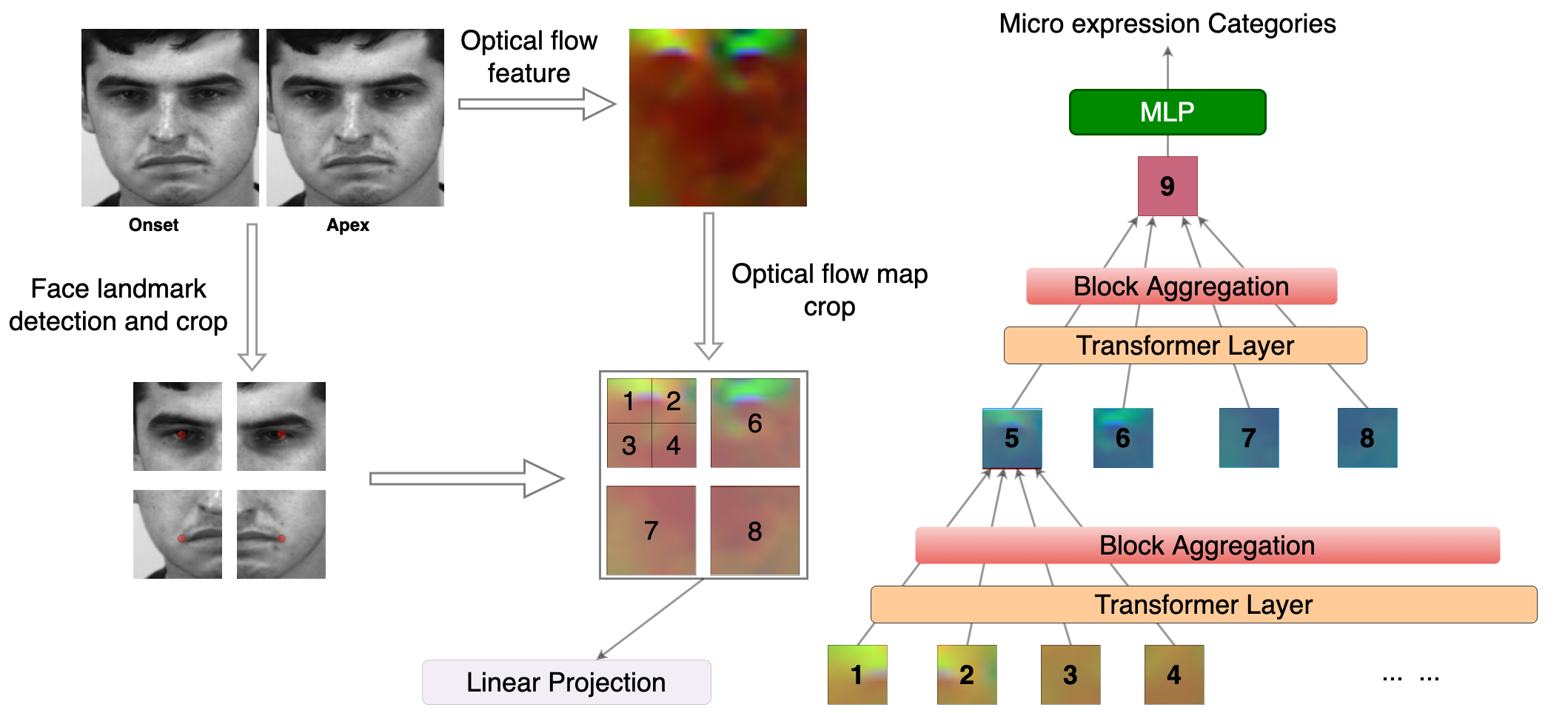HTNet for micro-expression recognition
Facial expression is related to facial muscle contractions and different muscle movements correspond to different emotional states. For micro-expression recognition, the muscle movements are usually subtle, which has a negative impact on the performance of current facial emotion recognition algorithms. Most existing methods use self-attention mechanisms to capture relationships between tokens in a sequence, but they do not take into account the inherent spatial relationships between facial landmarks. This can result in sub-optimal performance on micro-expression recognition tasks.Therefore, learning to recognize facial muscle movements is a key challenge in the area of micro-expression recognition. In this paper, we propose a Hierarchical Transformer Network (HTNet) to identify critical areas of facial muscle movement. HTNet includes two major components: a transformer layer that leverages the local temporal features and an aggregation layer that extracts local and global semantical facial features. Specifically, HTNet divides the face into four different facial areas: left lip area, left eye area, right eye area and right lip area. The transformer layer is used to focus on representing local minor muscle movement with local self-attention in each area. The aggregation layer is used to learn the interactions between eye areas and lip areas. The experiments on four publicly available micro-expression datasets show that the proposed approach outperforms previous methods by a large margin. The codes and models are available at: \url{https://github.com/wangzhifengharrison/HTNet}
PDF Abstract




